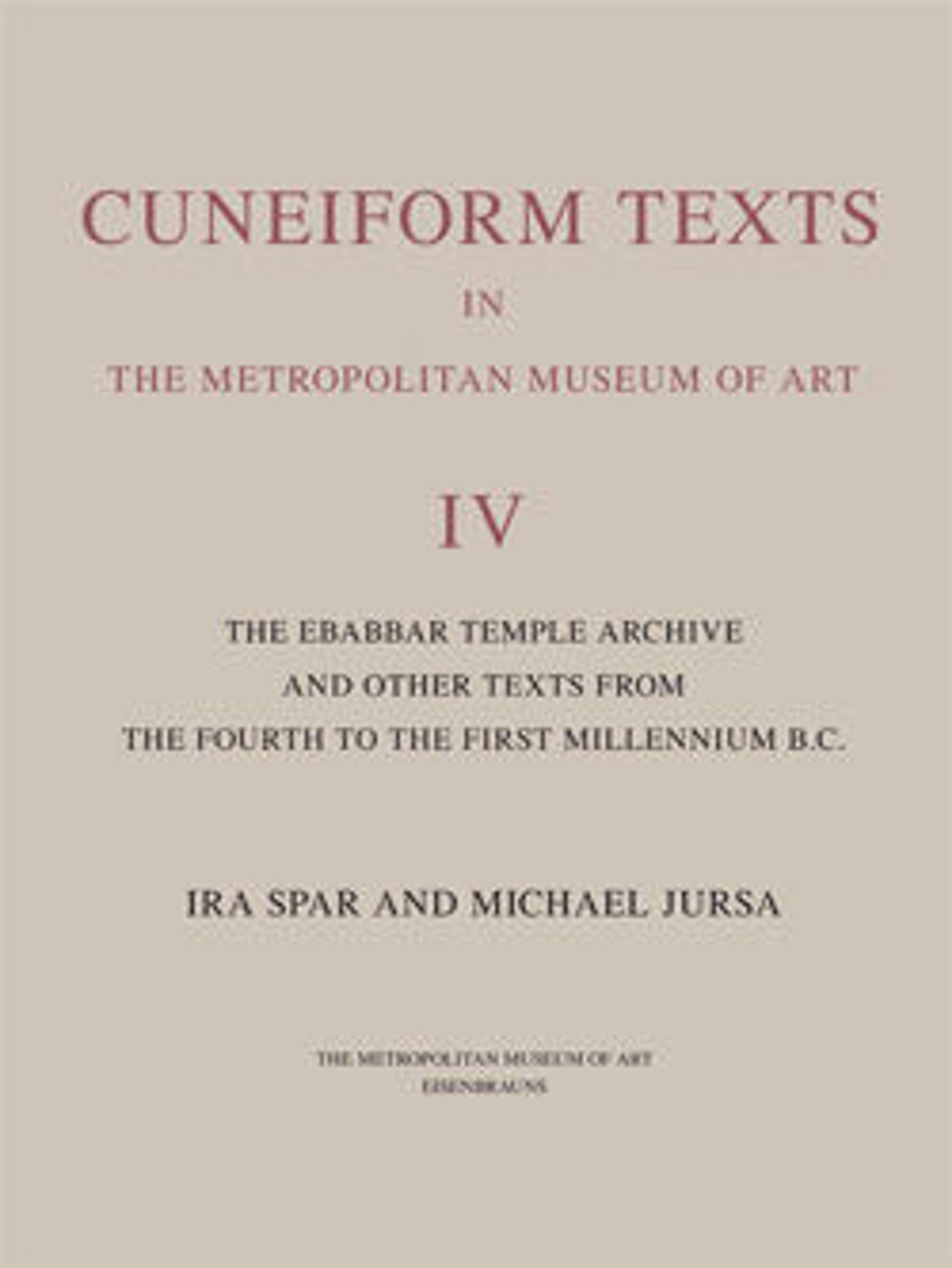Cuneiform cylinder: inscription of Nebuchadnezzar II describing the construction of the outer city wall of Babylon
"I built a strong wall that cannot be shaken with bitumen and baked bricks... I laid its foundation on the breast of the netherworld, and I built its top as high as a mountain."
This cylinder is one of many commemorating the extensive building program carried out by the Babylonian king Nebuchadnezzar II (604–562 B.C.), which transformed the city of Babylon into a grand imperial capital. Following a long-established Mesopotamian practice, clay cylinders were inscribed in cuneiform script baked to ensure their survival into the distant future, and deliberately buried in the foundations of buildings as they were being built or restored. Often they record the restoration of structures that were already ancient, especially the great temples of the city, but in this case the cylinder describes Nebuchadnezzar’s building of a new outer city wall, which "no previous king had done." The wall itself was identified by archaeologists in the early 1900s; it is unknown how densely the outer city was populated, but the area enclosed by the wall suggests that Babylon was at this time the largest city in the world. The inner city of Babylon was guarded by further fortification walls.
Cylinders such as this were made to be buried, and their text was intended primarily for the gods. However, it was also hoped that future kings might find them in the course of performing their own restorations, and so perpetuate and honor the builder’s name. In this regard, Nebuchadnezzar took all possible measures: as well as foundation cylinders and some larger inscriptions on stone, the baked bricks of Babylon carry the king’s name and titles, impressed with a stamp before baking. The stamp was pressed into to the top surfaces of the bricks so that, like the cylinders, their inscriptions would not normally be seen by human eyes; nonetheless, they occur literally millions of times at Babylon, hidden in Nebuchadnezzar’s palace and city walls.
This cylinder is one of many commemorating the extensive building program carried out by the Babylonian king Nebuchadnezzar II (604–562 B.C.), which transformed the city of Babylon into a grand imperial capital. Following a long-established Mesopotamian practice, clay cylinders were inscribed in cuneiform script baked to ensure their survival into the distant future, and deliberately buried in the foundations of buildings as they were being built or restored. Often they record the restoration of structures that were already ancient, especially the great temples of the city, but in this case the cylinder describes Nebuchadnezzar’s building of a new outer city wall, which "no previous king had done." The wall itself was identified by archaeologists in the early 1900s; it is unknown how densely the outer city was populated, but the area enclosed by the wall suggests that Babylon was at this time the largest city in the world. The inner city of Babylon was guarded by further fortification walls.
Cylinders such as this were made to be buried, and their text was intended primarily for the gods. However, it was also hoped that future kings might find them in the course of performing their own restorations, and so perpetuate and honor the builder’s name. In this regard, Nebuchadnezzar took all possible measures: as well as foundation cylinders and some larger inscriptions on stone, the baked bricks of Babylon carry the king’s name and titles, impressed with a stamp before baking. The stamp was pressed into to the top surfaces of the bricks so that, like the cylinders, their inscriptions would not normally be seen by human eyes; nonetheless, they occur literally millions of times at Babylon, hidden in Nebuchadnezzar’s palace and city walls.
Artwork Details
- Title: Cuneiform cylinder: inscription of Nebuchadnezzar II describing the construction of the outer city wall of Babylon
- Period: Neo-Babylonian
- Date: ca. 604–562 BCE
- Geography: Mesopotamia, Babylon (?)
- Culture: Babylonian
- Medium: Clay
- Dimensions: 2 5/8 × 4 7/8 × 2 13/16 in. (6.7 × 12.35 × 7.2 cm)
- Credit Line: Purchase, 1886
- Object Number: 86.11.60
- Curatorial Department: Ancient West Asian Art
More Artwork
Research Resources
The Met provides unparalleled resources for research and welcomes an international community of students and scholars. The Met's Open Access API is where creators and researchers can connect to the The Met collection. Open Access data and public domain images are available for unrestricted commercial and noncommercial use without permission or fee.
To request images under copyright and other restrictions, please use this Image Request form.
Feedback
We continue to research and examine historical and cultural context for objects in The Met collection. If you have comments or questions about this object record, please contact us using the form below. The Museum looks forward to receiving your comments.
